It was one for the books. Emirates, one of the world’s most well-regarded airlines, landed the first Airbus A380 commercial flight into the Philippines last October 7, 2014. The one-off event, graced by Emirates executives and President Noynoy Aquino himself, marked the carrier’s move to the newer NAIA Terminal 3 in Manila, as well as their longstanding commitment to the country. Lucky was I to be present in that historic event for Philippine aviation. Read more…
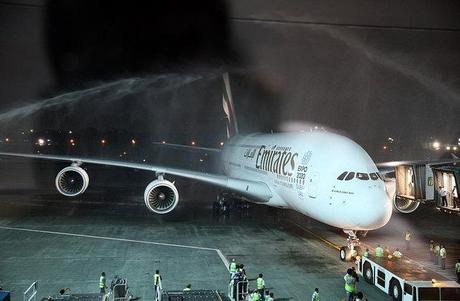
As early as around 9:00 PM, more than an hour ahead the flight’s arrival, numerous VIPs, Emirates employees, and members of the media had already gathered at the international departures concourse of the NAIA Terminal 3. Exuberance and eagerness were felt all over as the crowd waited with the President for the arrival of Emirates flight EK 334 from Dubai.
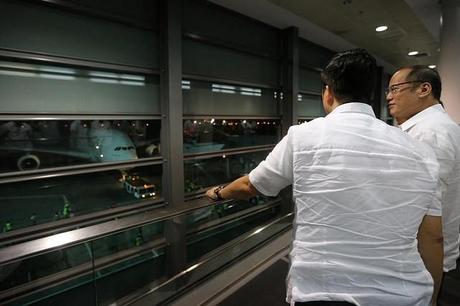


All the glee and fanfare were warranted. The world’s largest passenger aircraft has not been ceremoniously welcomed since its test landing in 2007, and again, it was the first time that the A380 was landing in the country as a commercial flight—passengers, functional cabin, and all.
As the A380 touched down, it was welcomed by a customary water cannon salute. Together with Emirates’ Mr. Barry Brown, Divisional Senior Vice President for Commercial Operations East, and Mr. Salem Obaidalla, Senior Vice President for Aeropolitical and Industry Affairs, President Aquino greeted passengers and the man of the hour, Capt. Franklyn Desiderio.
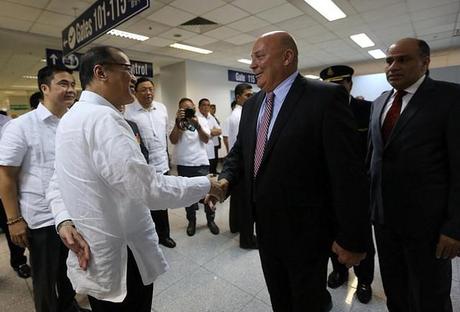

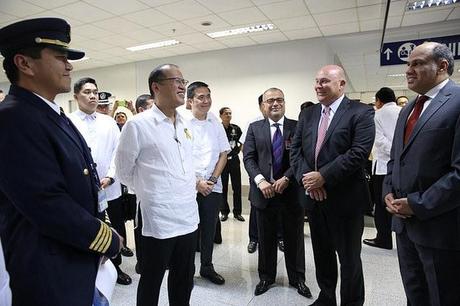
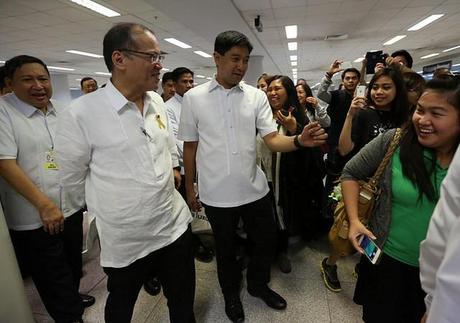
Capt. Desiderio is no less than the first A380 pilot from the Philippines. With more than 14,000 flying hours on commercial flights, the native of Bulacan was rated to fly A340 and A330 aircraft prior to the A380. Of course, he wasn’t able to hide how jubilant he felt landing the jumbo plane into his home country. “Napakasaya ng feeling (I felt very happy),” he said.
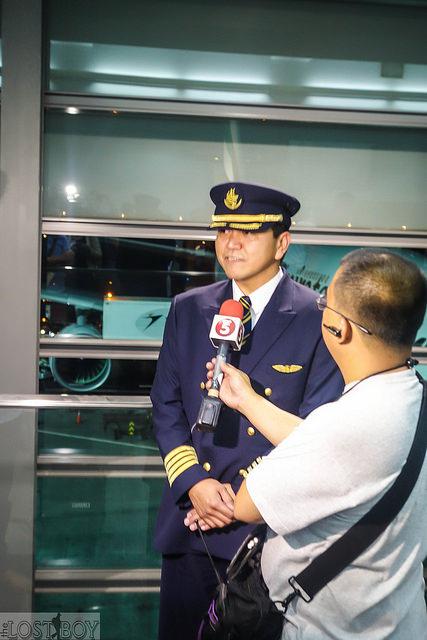
Asked whether the NAIA Terminal 3 is prepared to handle the A380, Capt. Desiderio noted that it can be currently utilized as an “alternate airport.” For it to be deemed fitting as a destination airport, however, he stressed that improvements on taxi limitations, the number of standby fire trucks, and the insurmountable traffic congestion must be done. He also worries how our terminals, especially our immigration officers, would handle 500 passengers at once.
I was also able to chat with Mr. Obaidalla whom I asked about how their A380 is faring in a highly-competitive market. He claimed that business is strong and that people fly to where their A380’s do, proving that the response for their product and service is very favorable. Currently, Emirates has a fleet of 53 Airbus A380-800 aircraft, with 87 more pending delivery.
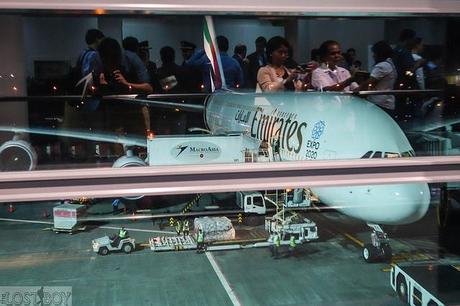
After the cabin was spruced up, we were called to board for a tour of the Emirates A380. Emirates staff were flown in specifically to show us around, along with cabin crew who were also serving the turnaround flight to Dubai. So the flight can depart as scheduled, our tour through the economy, business, and first class cabins was limited to a few minutes.
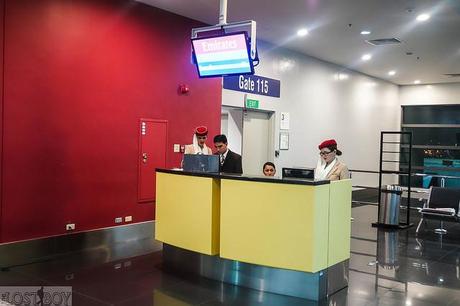
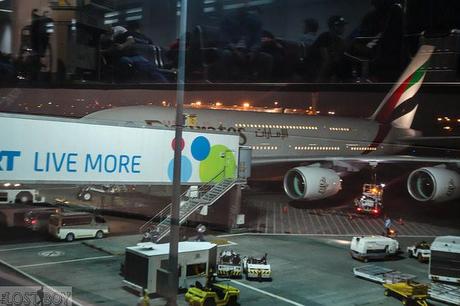
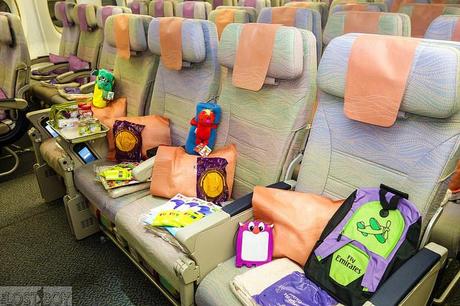

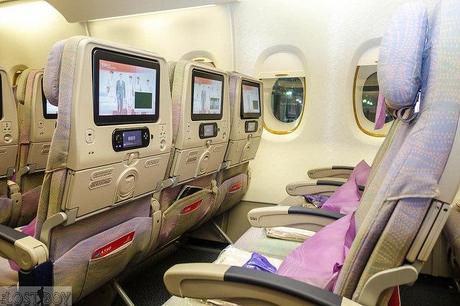
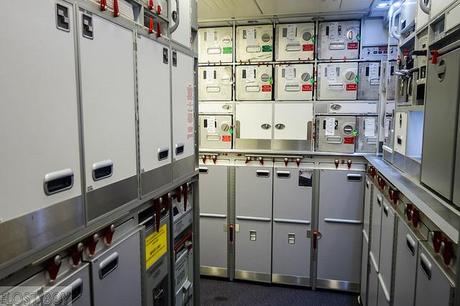
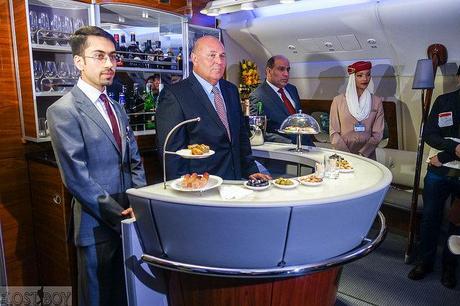
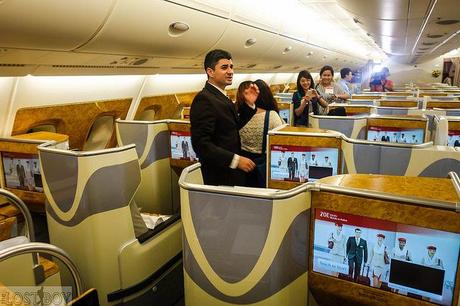
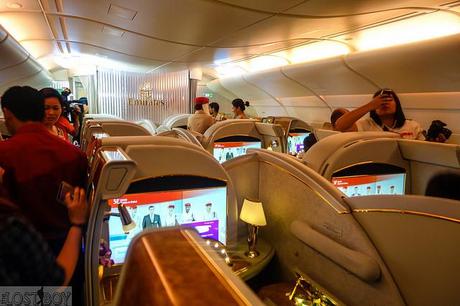
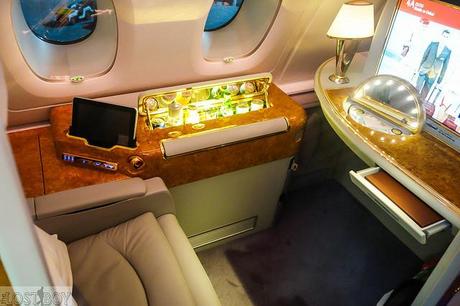
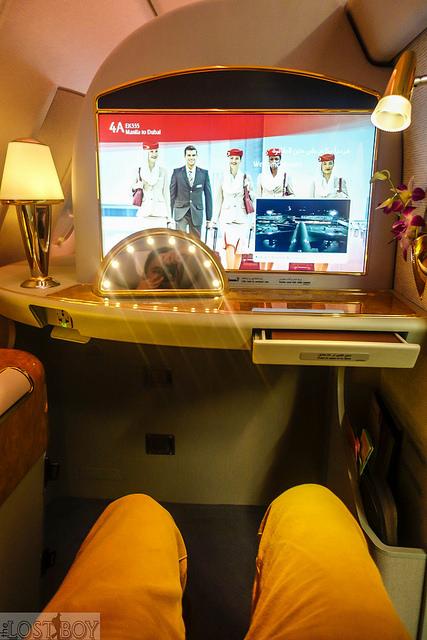
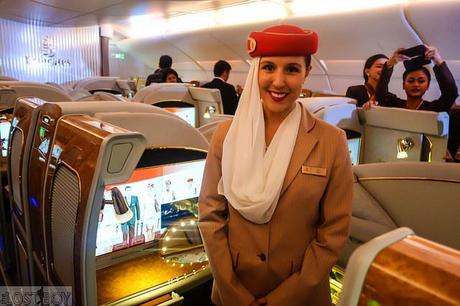
Everyone from our group were excited taking photos and selfies, nonetheless, as most of us have never even boarded an A380 yet. I took time examining the seats—the pitch, width, comfort, entertainment, and recline—and I found that even their economy is tough to beat. And after being given a tour of the awe-inspiring First Class, I just added riding the Emirates A380 into my bucket list. (Read my article about the Emirates A380 through this link.)
Emirates flies three times daily between Manila and Dubai. At Dubai International Airport, passengers may easily connect to 31 A380 destinations, such as London,Paris, and Amsterdam.
Some photos are from the Presidential Communications Operations Office (PCOO).
RELATED ARTICLE: Meet the Emirates Airbus A380

